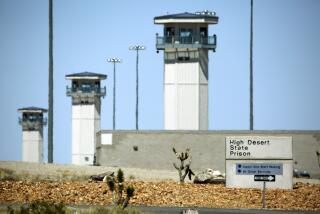Slow Coronerâs Pace Can Take Toll on Survivors : Autopsies: Budget cuts, short staff and lab problems meld to cause a six-month wait for the official cause of death in some cases.
SANTA ANA â It had been six months since the funeral, but for Doreen Foster, the life and death of her sister remained unfinished business.
She strongly suspected that her sister, who was terminally ill with cancer, had committed suicide. But because of budget cuts, staffing shortages and laboratory setbacks, the county coronerâs office notified Foster only last week that her sister had, in fact, killed herself in February.
âItâs been like a nightmare,â the Fullerton woman said. âI would call (the coronerâs office) every Friday to see what was going on, and it got to be almost like she had a birthday every week, another anniversary or something to remind me, âHey, youâre sisterâs gone and sheâs not coming back.â â
The delay was hardly rare. More than 200 autopsies are backlogged because of unfinished lab work, and the coronerâs office has been telling families of all new cases to expect a six-month wait, Chief Deputy Coroner Jim Beisner said. For those families, the lag can mean emotional and economic difficulties.
âLacking a death certificate can complicate the probate process, and life insurance claims are put on hold until the official cause of death is pronounced,â Beisner said. âAnd once we complete it, it can take the state eight weeks to get back to the family with an actual certificate.
âWe know what problems, what hardships, weâre creating,â he added. âAnd itâs very frustrating for the people in my office because theyâre talking to the families, and we know how desperate some of them are. But itâs out of our hands.â
It is, instead, in the hands of the toxicology lab, the source of the backlog. That laboratory conducted tests on about 1,500 deaths of the 14,500 that occurred in Orange County last year, including all traffic accident fatalities, suicides, homicides and suspicious deaths, according to Frank Fitzpatrick, forensic sciences services director.
âBasically, our job is to prove what drugs are present in the body, where they are present, and how much are present,â Fitzpatrick said. But reaching those conclusions has been increasingly difficult as staffing problems have kept the lab playing catch-up.
Like other county departments, the lab dealt with this yearâs 5% budget cut, and then a hiring freeze. Fitzpatrick said the departmentâs troubles grew worse with the departure of several key staffers, one of whom took a six-month sick leave and two others who took jobs in the private sector. At one point, the staff of six toxicologists slipped to four, and it now stands at five after the recent addition of an intern.
But of the five, Fitzpatrick said, only two can do the âcompleteâ job, while the other three are in various stages of training. Because of the complexity of the work, it can take anywhere from three to five years on the job before a chemist can operate without supervision, he said.
The small toxicology lab is tucked away in the Sheriffâs Department headquarters at Santa Anaâs Civic Center complex. Toxicologists there spend the day with charts, test tubes and refrigerated specimens of brain, liver and stomach tissue stored in what resemble cottage cheese containers.
Beisner said the coronerâs office and the toxicology lab have been trying to speed up their systems. âWeâre constantly looking for ways to reduce the number of tests we do, or to reduce the number of cases we look at--to see if there are any that are unnecessary,â he said.
Some of these approaches include farming out longer test procedures to private laboratories, and having toxicologists meet with coroner officials after completing early rounds of testing to see if further screenings are necessary.
In the meantime, the lab will place top priority on cases such as homicides and jail deaths, while less-pressing cases are put on hold. Occasionally, such as with Mary Joanne Fosterâs death, a case will be speeded up if a loved one complains.
âI started writing the letters after I called to check on her case the fourth time and (an employee) told me it was still pending,â Doreen Foster said. âSo I asked if he expected things to change, if he foresaw any improvements. His response was, âOut of sight, out of mind.â So thatâs when I started making noise to make sure my sisterâs case was not out of sight.â
Now, her wait is over. While the paperwork that will lead to an official death certificate must wind its way through the bureaucracy for a few more months, Foster finally has a coronerâs report. Under the cause of death, it says âsuicide.â
âI read this, and itâs like Iâve reached the point where I know my sister is dead, and that I wonât see her again. I can see in writing, so for some reason thereâs a finality to it,â Foster said. âIâve found some peace. I just hope other people in Orange County can find it too.â
Autopsy Trend
The number of autopsies performed by the coronerâs office declined 3% last year after reaching a nine-year high in 1989.
â82: 2,179 â90: 2,414 Source: Orange County
More to Read
Sign up for Essential California
The most important California stories and recommendations in your inbox every morning.
You may occasionally receive promotional content from the Los Angeles Times.










